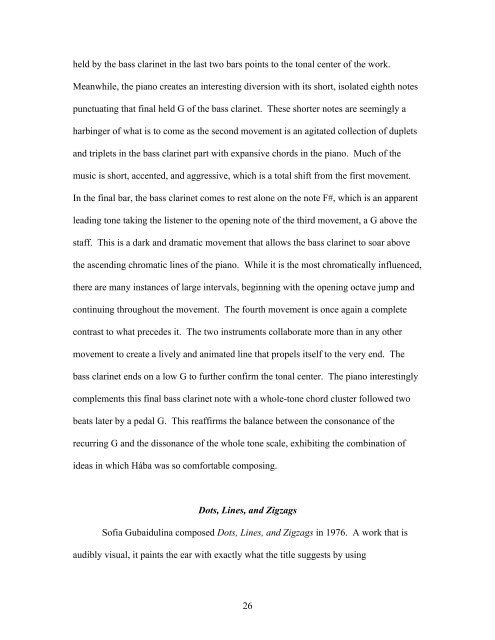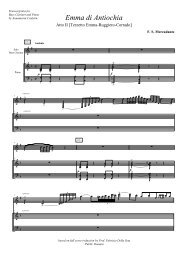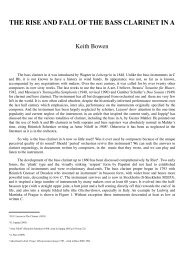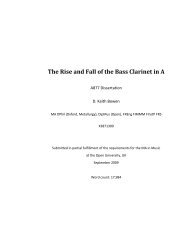Dissertation - International Bass Clarinet Research Center
Dissertation - International Bass Clarinet Research Center
Dissertation - International Bass Clarinet Research Center
Create successful ePaper yourself
Turn your PDF publications into a flip-book with our unique Google optimized e-Paper software.
held by the bass clarinet in the last two bars points to the tonal center of the work.<br />
Meanwhile, the piano creates an interesting diversion with its short, isolated eighth notes<br />
punctuating that final held G of the bass clarinet. These shorter notes are seemingly a<br />
harbinger of what is to come as the second movement is an agitated collection of duplets<br />
and triplets in the bass clarinet part with expansive chords in the piano. Much of the<br />
music is short, accented, and aggressive, which is a total shift from the first movement.<br />
In the final bar, the bass clarinet comes to rest alone on the note F#, which is an apparent<br />
leading tone taking the listener to the opening note of the third movement, a G above the<br />
staff. This is a dark and dramatic movement that allows the bass clarinet to soar above<br />
the ascending chromatic lines of the piano. While it is the most chromatically influenced,<br />
there are many instances of large intervals, beginning with the opening octave jump and<br />
continuing throughout the movement. The fourth movement is once again a complete<br />
contrast to what precedes it. The two instruments collaborate more than in any other<br />
movement to create a lively and animated line that propels itself to the very end. The<br />
bass clarinet ends on a low G to further confirm the tonal center. The piano interestingly<br />
complements this final bass clarinet note with a whole-tone chord cluster followed two<br />
beats later by a pedal G. This reaffirms the balance between the consonance of the<br />
recurring G and the dissonance of the whole tone scale, exhibiting the combination of<br />
ideas in which Hába was so comfortable composing.<br />
Dots, Lines, and Zigzags<br />
Sofia Gubaidulina composed Dots, Lines, and Zigzags in 1976. A work that is<br />
audibly visual, it paints the ear with exactly what the title suggests by using<br />
26







